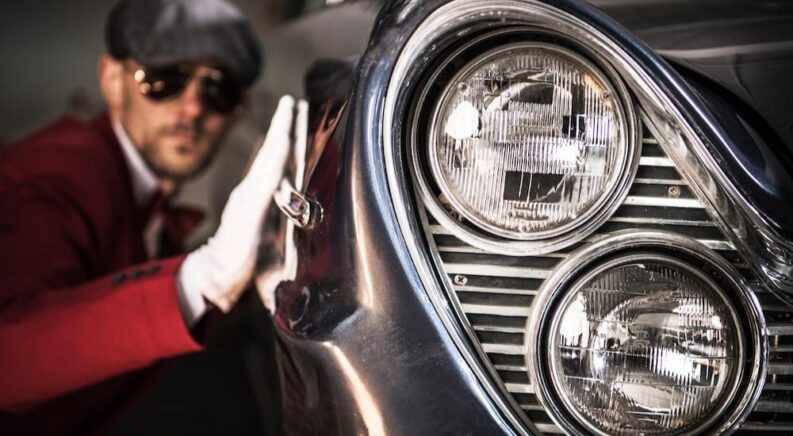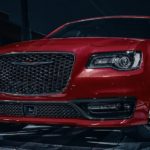While it might have since faded into the rearview mirror, American Motors Corporation was a formative brand that helped shape the auto industry. The defunct automaker might not be familiar to younger drivers, but for those who remember the days of tail fins, chromed-out bumpers, and gaudy hood ornaments, AMC likely played a part in some of their earliest automotive memories.
Formed out of a merger between two smaller brands looking to compete with the industry’s power brokers, AMC would give Detroit’s Big Three a run for their money before disappearing entirely in the late 1980s. While AMC might have long since ridden off into the sunset, the company’s visionary creations are continuing to shape the market to this day. AMC’s forerunner was not only the first American automaker to produce a compact car—the Nash Rambler—but would also introduce the world to the AMC Eagle, a unique four-wheel-drive compact that many regard as the world’s first crossover model.
So, how did AMC get its start, how did it develop such a reputation for forward-thinking designs, and what became of the brand commonly known as America’s last independent automaker? I’ll answer all these questions and more as we dive into the history of AMC…
One David, Three Goliaths
Until recently, the American auto industry had been dominated by a few major players; Detroit’s “Big Three”—Ford, General Motors, and Chrysler—once had a virtual monopoly on domestic car sales, with a combined market share as high as 90% in the late 1960s, but things have certainly changed over the last few decades. Chrysler—now part of multinational Stellantis—has been surpassed by Toyota of America, while other Japanese, South Korean, and European brands have continued gobbling up domestic sales.
Recent upheaval aside, many drivers have no trouble recalling a time when the traditional Big Three ruled the road—but it wasn’t always that way. From Packard and Studebaker to Kaiser-Jeep and DeSoto, the domestic auto industry used to boast a lot more diversity. These brands slowly fell by the wayside amid heavy competition, either being absorbed by the Big Three or folding entirely. The trend was exacerbated by a tense price war between Ford and GM in the early 1950s that pushed a number of smaller automakers out of the market.
Some of these struggling automakers turned to mergers as a way to stave off the insatiable appetites of Ford, GM, and Chrysler, which is where AMC got its start. Founded in 1954, AMC was born when the Nash-Kelvinator Corporation acquired the Hudson Motor Car Company in what was, at the time, the largest merger in US history. The newly combined corporation immediately became the country’s fourth-largest automaker, giving AMC the resources it needed to compete with its well-heeled competitors.
Despite its fourth-place ranking, AMC knew that taking on the Big Three would be an uphill battle, so it turned to a sort of automotive Moneyball that emphasized making the most of its relatively modest capital. Much of the credit for AMC’s early success can be attributed to two men: Chief Stylist Dick Teague and AMC President/Chairman George Romney. Teague was renowned as a man who knew how to design a car on a shoestring budget, while Romney—a future Michigan governor, Secretary of Housing and Urban Development, and father of politician Mitt Romney—provided the decisive leadership needed to keep AMC competitive in a dog-eat-dog market.
Ramble On
Romney’s most fateful decision would be the call to discontinue the existing Hudson and Nash lines to focus solely on the Rambler American, a spunky little compact based on the 1955 Nash Rambler. This smaller car, with its low starting price and impressive fuel efficiency, was the perfect fit for an American economy that was in the throes of a recession. It was also cheap to develop, with so much of the R&D and design work simply cribbed from the existing Nash model.
AMC just made a few tweaks, including clever cost-saving measures like removing skirted fenders and turning the existing taillights upside down instead of retooling new designs. The result was a reliable compact powered by a 3.2-liter straight-six engine that put out 90 hp and cost just $1,789 (around $19,000 in 2023). It was also fully rust-proofed and marketed as the only small car with an automatic transmission.
Still, the Rambler was a bold gambit for the fledgling AMC. The Nash and Hudson lines had pretty solid brand recognition and customer loyalty, and a compact like the Rambler was certainly swimming against the current in a 1950s car culture that was largely guided by a “bigger is better” ethos. But the Rambler was an instant hit, giving American drivers something they didn’t even know they wanted and generating no shortage of good press.
Tom McCahill’s early review sums it up best, with the Mechanix Illustrated critic calling the Rambler “an ideal-size small family car… It will give up to 30 miles on a gallon of gas and will outperform any imported sedan selling for under $2,000 except in the cornering department. There isn’t a better buy in the world today.”
The Rambler earned AMC a stellar reputation in the economy car segment and helped to finance a $10 million expansion of the company’s Kenosha plant. AMC was bullish on its new small car approach—the “dinosaur-fighter” strategy, in AMC parlance—and predicted that these models could lead to as many as three million sales by 1963. The Rambler would later morph into a V8-powered muscle car dubbed the SC/Rambler, but it was the early, fuel-efficient model that really set AMC up for its future success.
Losing the Plot
By the early 1960s, the compact Rambler was the third best-selling vehicle on the US market—a fact that makes AMC’s next move a little confusing. Romney left the company to run for governor of Michigan, and he was replaced by former sales executive Roy Abernathy, who decided to ditch the compact formula in the hopes that AMC’s success and reputation would translate to the larger, more luxurious end of the automotive market and its larger profit margins. The result was the full-size Rambler Ambassador, which certainly achieved Abernathy’s goals… at least in the short term.
The new full-size model spurred a sales boom at AMC, which sold 71,000 units in 1966—up from just under 20,000 in 1964—but there was just one problem: designing an entirely new car—and restyling existing models to keep up with consumer’s tastes—was expensive. AMC posted $4.2 million in losses in 1966 and more than $12.6 million in 1967. Abernathy wasn’t ready to abandon his larger/luxury strategy and, in a bid to differentiate the Ambassador and Marlin luxury models from the budget-oriented Rambler, rebranded the two models under the AMC nameplate.
The change wouldn’t help to alleviate AMC’s financial woes and Abernathy would eventually be replaced by Roy D. Chapin Jr. (the son of the Hudson Motors founder) in late 1967. Chapin Jr. would bring a new, youth-oriented approach to AMC’s executive suite, which, in the late ‘60s, meant muscle and pony cars. The AMX would serve as the company’s muscle car offering while the Javelin would allow AMC to compete with the cultural phenomenon that was the Ford Mustang.
AMC further diversified its lineup in 1970 when it bought the Jeep brand from Willys-Overland. This $75 million deal was a win for both brands, giving AMC an instant presence in the pickup and SUV segments, with models like the J-10 pickup and CJ-5 Renegade, and giving Jeep a new home at AMC dealerships across the country.
The automaker also discontinued the Rambler American in 1977 in favor of a new offering: the Hornet, a compact model that would later serve as the basis for AMC models like the Spirit, Concord, and Gremlin, the latter of which would carry the distinction of being the first American-made subcompact model. The renewed focus on the compact segment worked a treat, and the Hornet quickly became AMC’s new best-selling vehicle.
The Pacer and Matador would round out AMC’s lineup through the decade, and while all these models are worth a closer look, I’m going to skip ahead to take a quick look at AMC’s next game-changing model: the Eagle. While the Eagle was basically just an updated version of the existing Spirit and Concord models, it brought something entirely new to the compact/subcompact class: four-wheel drive. Designed with full-time 4WD, the Eagle allowed AMC to leverage its new, Jeep-inspired 4WD expertise and quickly became a popular choice for drivers in areas that experienced harsh winter weather.
The Eagle boasted all the safety and control of a four-wheel-drive vehicle without the poor fuel economy and ride comfort typically associated with models that employed the body-on-frame design common to many pickups and off-roaders. AMC went with a unibody approach, which, when combined with 4WD, made the Eagle the world’s first crossover vehicle. That winning formula is still a force to be reckoned with today and helped to drive sales at a time when AMC’s Jeep brand was suffering due to high fuel prices brought on by the late-1970s energy crisis.
French Fried
Ultimately, the Eagle and AMC’s acquisition of Kaiser-Jeep would not be enough to keep the company afloat. With flagging sales, a 1.7% market share, and a lineup reduced to just four models—the Gremlin, Concord, Spirit, and Eagle—AMC would broker an ill-fated deal with French automaker Renault in 1979 that saw the brand receive a $150 million cash infusion in exchange for 22.5% of the company. That number would grow to 49% by 1983 as Renault kept topping off its coffers with further investments.
The deal would prove successful in the short term, giving AMC a quick infusion of capital and allowing it to weather the changing market, but the turning point would come on November 17, 1986, when Renault president Georges Besse was assassinated at his home in Paris amid labor unrest. Besse had been a champion of the AMC acquisition, but his replacement wasn’t so keen on the partnership…
AMC had been Renault’s chance to break into the US market, but growth had been slow, and the company still felt like it was on the outside looking in. AMC would lose around $750 million between 1980 and 1983, making the continued investment a tough sell; this was exacerbated by an unstable economic and political situation in France—and given the fact that the French government owned around 15% of Renault, something had to change.
AMC discontinued every AMC model aside from the Eagle as it focused on producing Renault-branded models like the Alliance, Encore, and Fuego, but it still wouldn’t be enough. Famed auto executive and Chrysler CEO Lee Iacocca tried to buy Jeep off Renault in the mid-1980s, and while he was initially rebuffed, 1987 saw both Jeep and AMC offered as a package deal.
Chrysler quickly sentenced the company to the same fate that had come for so many independent automakers at the hands of the Big Three, shuttering AMC and folding it into the new Jeep-Eagle division of Chrysler. In retrospect, the timing was a little odd, as AMC’s Renault models were starting to gain some traction in the market, and the Eagle and Jeep models were selling just as well as ever. Still, Chrysler didn’t seem interested in seeing if there was any tread left in AMC’s tires.
Mourning an American Legend
AMC’s failure goes to show that deep thinking often can’t compete with deep pockets. The New York Times would pen an accurate-if-harsh obituary that reflected this reality in 1987, writing that AMC was “never a company with the power or the cost structure to compete confidently at home or abroad.” While the brand might have shaped the future of the industry with creations like the compact Rambler and its early crossover Eagle, market forces, mismanagement, stiff competition, and changing consumer tastes would eventually doom AMC to the scrap heap of automotive failures.
That’s not to say that AMC has been forgotten; the Gremlin, Pacer, and Javelin are still a hot ticket amongst classic car enthusiasts, and AMC’s story has inspired no shortage of documentaries, museum installations, and media coverage. The latest effort—a documentary titled “The Last Independent Automaker,” which is slated for a late 2024 release—is just one example of AMC’s lasting legacy, and it goes to show that a spirit of innovation championed by such brands will always live on, even if only in the history books.




